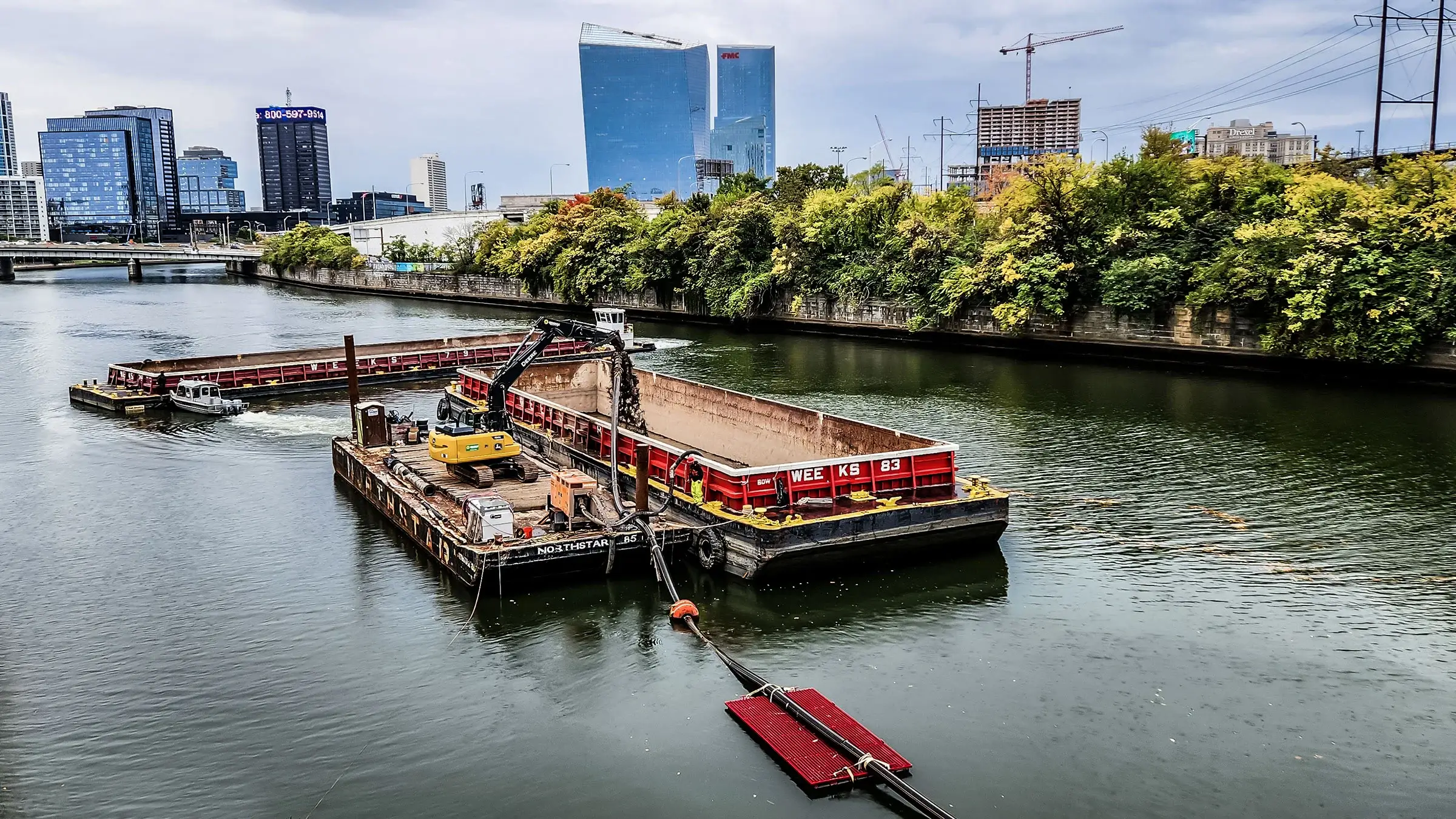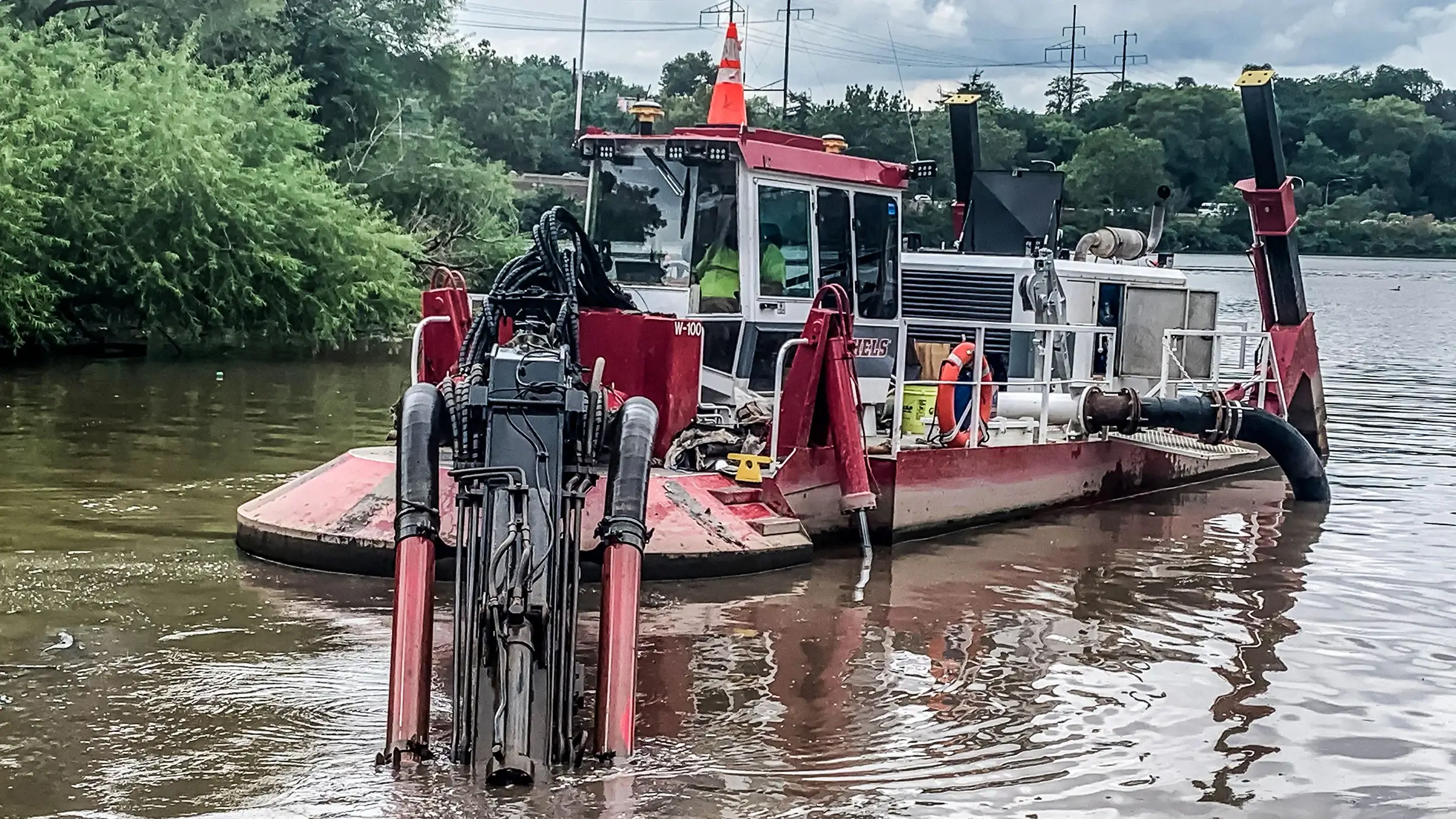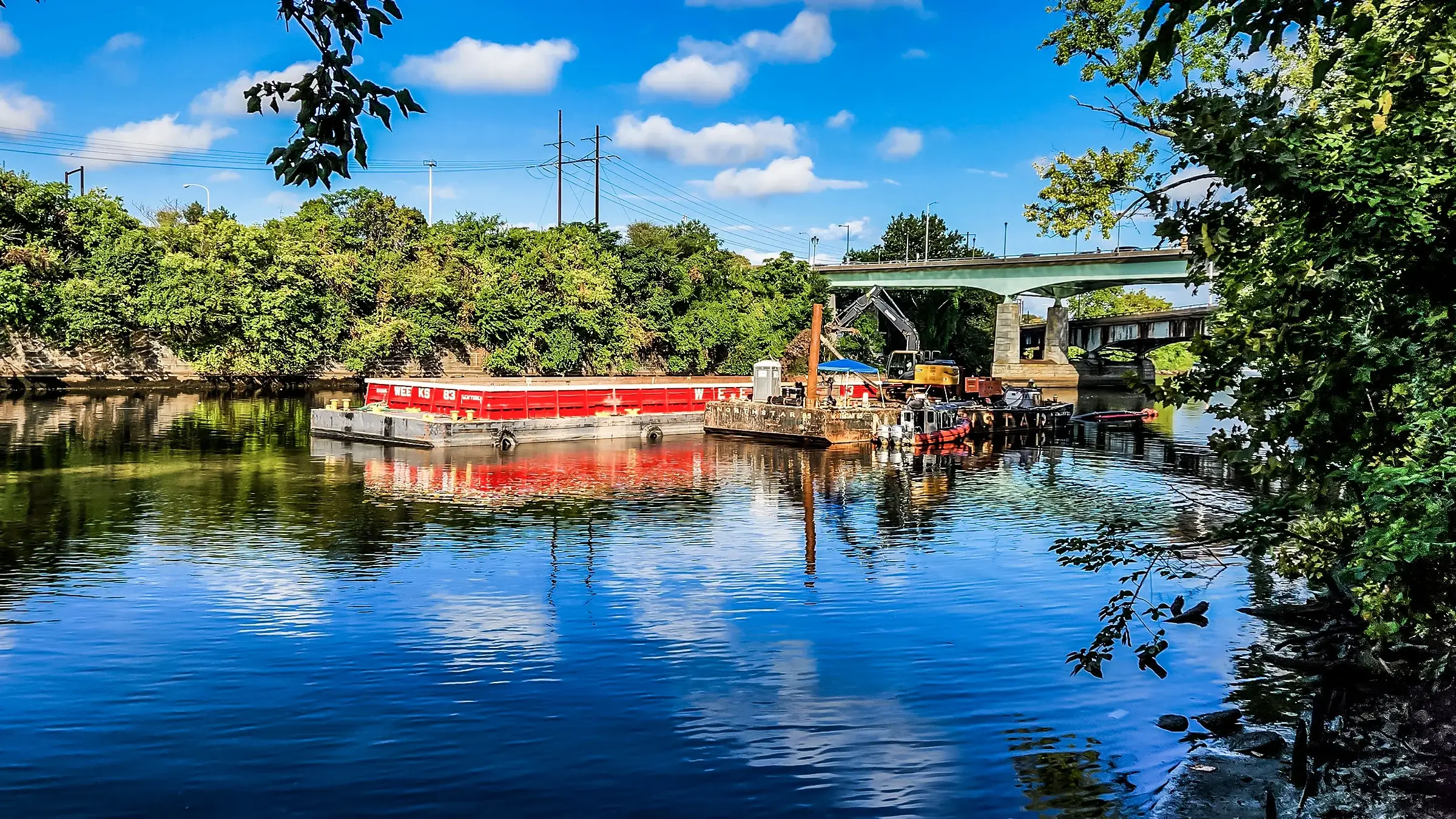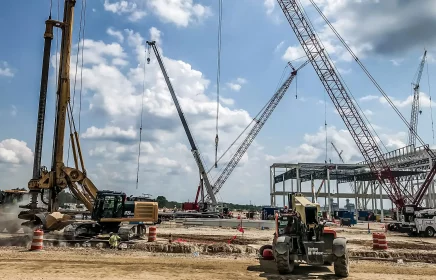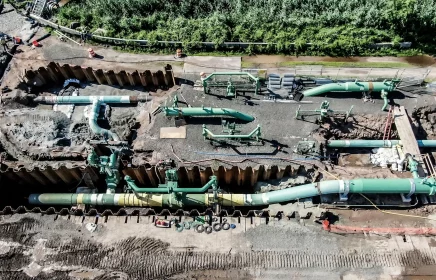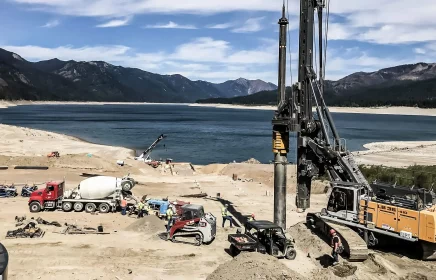Schuylkill River
Michels Construction, Inc. utilized hydraulic dredging techniques and an excavator to rake and dredge debris and coal deposits. Dredge material was removed at rates exceeding 750 cubic yards per day.
Dredging conditions were extremely challenging due to debris embedded in the mud. Items including trees and branches, old dock pilings, oil and chemical barrels, washing machines, bowling balls, and car tires had to be removed before the dredge could be effective. Soil conditions changed from silt to mud to sand to coal tailing from long-ago days of coal production on the Schuylkill River to underwater fields of anthracite coal lodged in the mud.
The dredge material was transported in a 10-inch HDPE pipe from the dredge to a booster pump that propelled the material through the 2,500-foot pipe over a historic hickory dam built in the 1830s and the working Fairmount Dam to a moored barge with a tracked excavator. The excavator handled the pipe and loaded fleet of four scows that were hauled by a 600 hp push boat approximately 8 miles down river to a second barge with a tracked excavator.
Boathouse Row is a national historic site of rowing clubs dating back to the 1850s, a training site for Olympic rowers and an iconic setting in the city of Philadelphia. The currents of the river had deposited sediment and debris in front of the boathouses, making it difficult for the clubs to launch boats.
